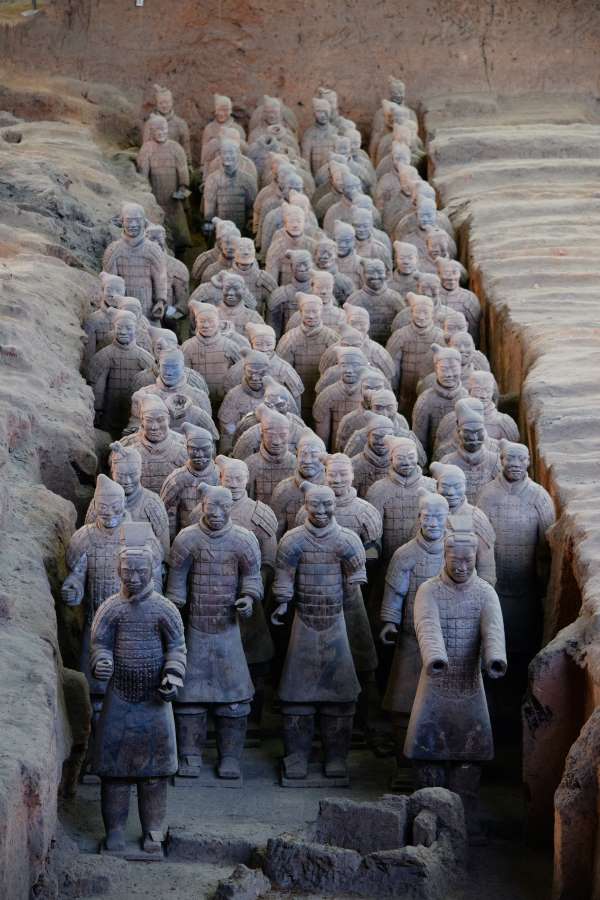Whether it’s ancient emperors or modern-day thinkers, immortality and life extension has been at the forefront of human contemplation. Considering this, it’s unsurprising that the first Chinese Emperor of the Qin dynasty, Qin Shi Huang, became consumed with the concept of immortality and, as a result, obsessively searched for the elixir of life – unsuccessfully of course.
But there are stories related to immortality which stretch back even further than Qin Shi Huang’s desperate expeditions. Tales of protagonists on quests to obtain eternal life appear at the very beginning of our literary resources. Therefore, transhumanist efforts to achieve this are not a new phenomenon. In fact, it is at the very core of human desire, and always has been.
This is in accordance with Roberto Manzocco, who believes the desire to find the key that unlocks human immortality is not a “naive” and “childish dream”, but is, in fact, “a quintessential part of our cultural DNA” (Manzocco, 2019). He uses the Epic of Gilgamesh to illustrate this innate part of the human psyche.
The first quest for immortality
Gilgamesh was, as is generally accepted, the king of Uruk, a Sumerian city-state. However, and more importantly, he is the protagonist of the Epic of Gilgamesh – a man who is two thirds god, one third human. In spite of all his talents however, Gilgamesh is not a great ruler. His reign over Uruk is tactless. But he meets his match in the form of Enkidu, a wild man who has been sent by gods to challenge Gilgamesh for his harsh rule. To cut a long story short, after a brief tussle between the two, they become best friends and set off on an array of different adventures together. Eventually, after the death of Enkidu, the impending question of Gilgamesh’s own mortality dawns on him – despite his godly assets, he is not immortal.
“Deep sadness penetrates my core,
I fear death, and now roam the wilderness”.
This realization motivates him to begin a quest to achieve immortality with what is one of the earliest references to the human obsession with everlasting life available in literary terms. Without a moment’s rest, he sets off to find his ancestor, Utnapishtim, who had “joined the assembly of the gods, and was given eternal life” after the great flood.
For Gilgamesh however, immortality was not to be. Despite almost eliminating senescence through eternal youth, and his perseverance to achieve everlasting life, he is unsuccessful. However, protagonists from different historical stories do achieve immortality – or rather, it is thrust upon them, and far from ideally.
The cruelty of immortality
Take Tithonus for example. Eos’ desire for Tithonus to “be deathless and live eternally” is granted by Zeus, but with an unsavoury twist. Indeed, Tithonus is granted immortality, but Eos was too simple in her request – she forgot to “ask youth for him”, so Tithonus was still subject to aging. Eventually, “loathsome old age” takes over and Tithonus is bedridden and unable to move his limbs. A gloomy story and perhaps the precursor to the old adage of ‘be careful what you wish for’.
It’s clear that the stories from our past perceive everlasting life with a touch of cynicism. Gilgamesh’s quest ends in failure and Tithonus’ eternal existence is torturous rather than opulent. Evidence for the more ominous side of immortality doesn’t stop there: Prometheus was sentenced to everlasting punishment for stealing the fire of the gods; the mythical character, the Wandering Jew, was cursed to roam the earth until Jesus’ second coming for taunting Jesus during his crucifixion; and Merlin became trapped under a rock for eternity after being deceived by the Lady of the Lake. It seems that, regardless of historic period, the fruits of immortality are often rotten.
Immortality had, however, generally been viewed through the lens of mythology and religion. This all changed in 1818 however. Mary Shelley’s Frankenstein provides the first story of immortality based on science rather than “magic or some other supernatural device” (Manzocco, 2019). This is one of the first times that immortality is sprung from human intellect, not a god or mythical being. Nevertheless, despite this secular transition, the morals remain grim. Frankenstein’s monster turns against humanity and its creator, eventually isolating itself in the northernmost part of the globe where it intends to end its own life, and, ironically, its own immortality.
From past to present
Our predecessors unequivocally believed that everlasting life is a curse to be avoided. But they had never been as close to significant life extension as we are now. Whereas, in the past, immortality had always been an unattainable concept, nowadays, modern science and new technology puts it within the realms of plausibility. That’s why some transhumanists would set aside the cynicism of the past in pursuit of everlasting life or, at least, significant life extension or the elimination of aging. Yet again, this is portrayed through literature.
It is Nick Bostrom’s short story, The Fable of the Dragon Tyrant, that provides the most optimistic view regarding aging. The dragon, the symbol senescence, rules with terror over the kingdom and thousands of human lives are sacrificed to satisfy the dragon’s desires. The dragon is eventually defeated by the development of a weapon which can penetrate the dragon’s “thick black scales”, and “after centuries of oppression, humanity at last was free from the cruel tyranny of the dragon” – the cruel tyranny of senescence.
These fables highlight a transition. Perspectives regarding mortality have moved from religious and mythical, to scientific and technological. Pessimism hasn’t left the fold, but optimism has entered it. Substantial life extension is no longer just a curse, it could potentially be a blessing. Regardless of whether it’s achieving immortality, significant life extension, or eradicating senescence, the fables of our past demonstrate the caution that needs to be taken when applying modern technology to these aspects. The wisdom of the past should not be overlooked, and now more than ever, society needs to look back in order to take the safest steps forward.
Roberto Manzocco (2019): Transhumanism. Engineering the Human Condition. Switzerland: Springer Praxis Books.















